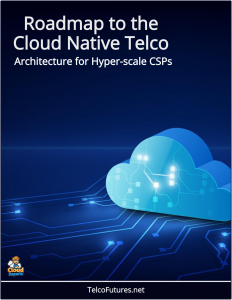Cloud Native Telco: Industry Standards Programs
The CNCF provides a wealth of resources mapping their deep domain expertise to the requirements of the Telco industry.
 With a goal to apply the principles and practices of Cloud Native Computing to the telco world industry standards programs are central to this process.
With a goal to apply the principles and practices of Cloud Native Computing to the telco world industry standards programs are central to this process.
Industry initiatives to define the relationship between Cloud Native principles and Telco Operational Support Systems (OSS) and Business Support Systems (BSS) focus on aligning modern software development practices with the specific needs of the telecommunications sector.
These efforts aim to clarify how Cloud Native approaches—characterized by scalable, resilient, and modular architectures—can be applied to OSS/BSS, which traditionally manage network operations, service provisioning, billing, and customer interactions for communication service providers (CSPs).
Several industry bodies, such as the Cloud Native Computing Foundation (CNCF), TM Forum, and ETSI (European Telecommunications Standards Institute), are working to establish a shared understanding of Cloud Native principles—such as microservices, containerization, DevOps, and continuous integration/continuous deployment (CI/CD)—and how they relate to OSS/BSS.
Standardization Programs
These groups explore whether Cloud Native means simply hosting legacy systems on cloud infrastructure or fully redesigning OSS/BSS as distributed, containerized applications optimized for dynamic scaling and automation.
- TM Forum: Through initiatives like the Open Digital Architecture (ODA), TM Forum is defining frameworks that integrate Cloud Native principles into OSS/BSS. ODA promotes modular, API-driven designs that allow CSPs to replace monolithic systems with interoperable components, aligning with Cloud Native’s emphasis on flexibility and openness.
- ETSI and NFV: The Network Functions Virtualization (NFV) framework, led by ETSI, examines how Cloud Native approaches can enhance virtualized network functions (VNFs) and their management via OSS. This includes exploring container-based deployments alongside traditional virtual machines.
- CNCF Telco Working Group: The CNCF has a telco-specific working group to explore how Kubernetes can support OSS/BSS workloads, focusing on orchestration, scalability, and resilience in telecom environments, building on the NFV work to define ‘CNFs’ (Cloud Native Network Functions).
CNCF establishes and promotes the principles of Cloud Native—microservices, containerization, dynamic orchestration, and declarative APIs—through its community-driven efforts. It maintains a “Cloud Native Definition” and a maturity model (graduated, incubating, and sandbox projects) to guide organizations, including telecom providers, in adopting these practices. This standardization helps clarify how Cloud Native can be applied to OSS/BSS, such as enabling modular billing systems or network management platforms.
Lessons We Learned from Deploying Cloud-Native Telco Cloud – Vodafone
In this CNCF Youtube video, Riccardo Gasparetto Stori and Tom Kivlin share their insights and lessons learned from deploying a cloud-native telco cloud. Vodafone is aggressively deploying Kubernetes-based telco cloud across its markets to support 5G Core and other containerised network functions, and recently went live with 5G SA Core CNFs in the UK, with other markets following.
They share their experiences both from the point of view of the Kubernetes-based telco cloud builders’ perspective and the CNF operator’s perspective – what are the main gotchas when building carrier-grade telco cloud, such as using Multus and Whereabouts for providing multi-homed networking, and what are their expectations as a Network Operator that needs to provide Telco Services to its customers using cloud-native technologies, for example the journey to Cloud Native EMS (Element Management Systems).
- Key Challenges: This section explores the main challenges faced when deploying a cloud-native telco cloud. It discusses issues such as scalability, reliability, security, and interoperability. The speakers provide insights into how these challenges can be addressed effectively.
- Best Practices: Here, the speakers share best practices for implementing a cloud-native telco cloud. They discuss topics like containerization, microservices architecture, automation, and monitoring. These best practices help ensure a successful deployment and operation of a cloud-native telco cloud.
- Lessons Learned: This section highlights the key lessons learned from the speakers’ experience in deploying a cloud-native telco cloud. They discuss the importance of collaboration, continuous improvement, and the need for a strong DevOps culture. The lessons learned provide valuable insights for organizations embarking on a similar journey.
Industry initiatives are systematically exploring how Cloud Native principles can reshape Telco OSS/BSS, balancing innovation with the sector’s unique operational and regulatory demands. Through standardization, collaboration, and practical testing, these efforts aim to provide CSPs with clear pathways to modernize their systems while maintaining service reliability and enabling future growth.



